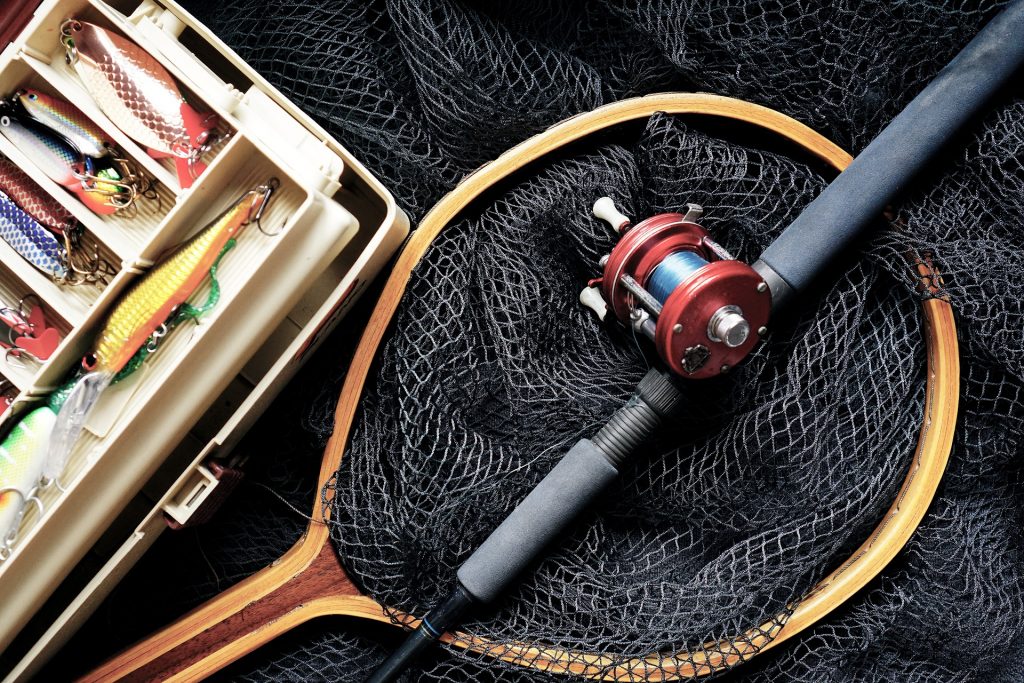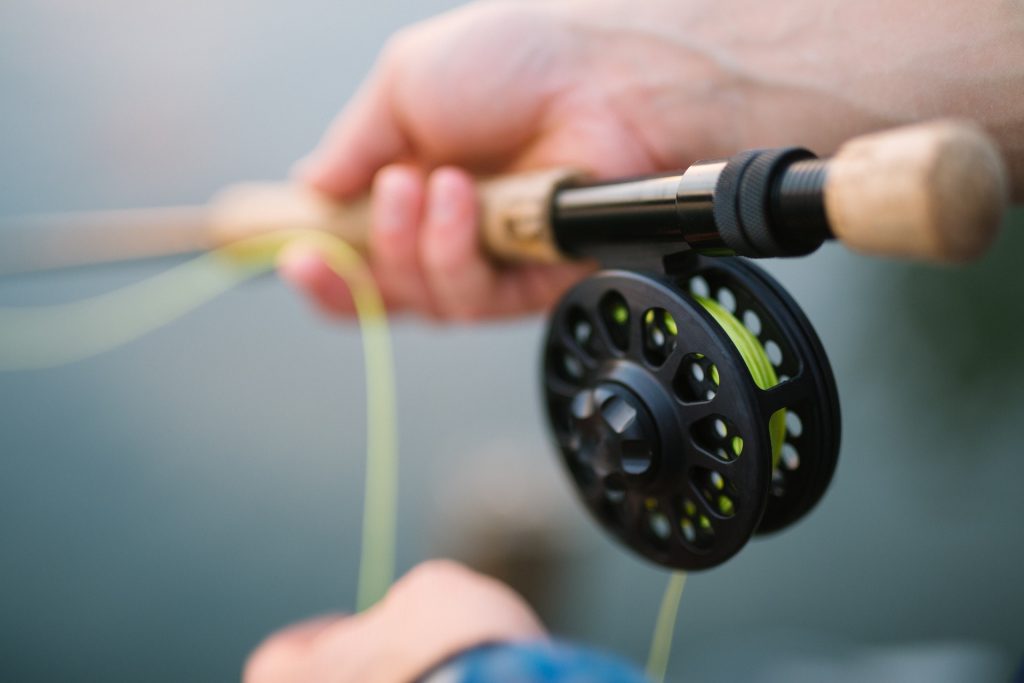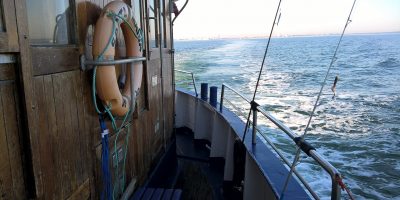Fishing is one of the most common leisure among individuals who want to more than just find a sport that fits them but also wants to be close to nature. Catching different types of fish is particularly challenging. For a fact, men and women are becoming increasingly interested in this sport because it does offer a huge sense of achievement especially when it comes to catching one of the most interesting fishes there is, the bass fish.
Now and then there are several instances by which fishing events are arranged to bring anglers in a particular region together. These events are often a test of strategy, experience, and knowledge. The better the angler or the fisher knows about the fish being caught, the more likely he would be able to bring home the win.
Are you interested in joining the fishing sport too?
Then you will certainly love to read through the worthy note on what bait to use for striped bass noted in this post.
Knowing what bait to use makes it easier for you to catch that elusive fish and be more satisfied with your fishing adventure, whether you are new to this sport or already a long-time angler.
The good thing about catching a bass fish is that it has a wide range of prey. This means that it eats a lot of different smaller fishes. This means that you can choose from a variety of possible baits that you can use to make that catch easily.

Best Baits to Use for Striped Bass:
First: LIVE EELS
Bass fish love slurping life eels down.
The question would be, how would you catch the eels for your next fishing adventure?
Eels are usually drifted or trolled. They are bottom dwellers so they ought to be fished from deep freshwaters. Through using weight or suspension, you can use a special fishing net to catch the eels in groups. However, if you do not have these eels, then you can use your fishing rod as it is. However, remember that these fishes are extremely slimy. You need all the patience you can get if you want to get the best eels in the deep freshwater.
Not to mention, if there are bluefishes around the area, it would be most likely that you will be n competition with these fishes too. Remember too that when you opt to fish for eels to get the best possible option to use as bait for bass, you need to be prepared to dig deeper into the behavior of this creature.
What else makes eels the best bait for bass fishing? Not every fish likes eels. This means that once they are to be thrown into the water, most fishes would avoid these eels. With this in mind, it does offer you a better chance at catching that bass even with a few strikes to the water. Even with a lot of other fishes in the area, you will still get a great chance of catching that specific reward you want, the bass fish.
SECOND: Bunker and Herring
Bunkers are known more commonly as pogies. Other regions know this as alewiveor menhaden. Another fish closely similar to the bunkers are herrings. Whichever an angler chooses between these two baits will likely depend on which one is available in the bait shop.
So why most anglers opt for the herring and bunker that could be readily bought in the bait shop?
These fishes are equally hard to catch. Although it has been observed by experienced anglers that using freshly caught herring and bunker often give better results when catching striped bass. Nonetheless, if there is no way for you to go out there and catch these baits on your own, frozen baits also work. Although the efficiency is reduced to at least 70%. Matched up with your strategy and your style of fishing, either of these two particular baits will surely give you a better chance at catching the striped bass fish you want to bring home.
THIRD: Crabs
Ready to catch that crab? Striped bass baits love to eat small hard crabs. Believe it or not, they love to gobble on the soft crabs. Often these crabs have some of their shells already gone. They are often called peelers. Soft crabs are quite a treat for striped bass; this is why crabs are among the best baits to use for striped bass.
What you need to know about these little fella’s is that they often escape fast if you do not put them in a secured container.
If you opt to just buy this bait from the bait shop, you might notice that it is quite expensive, simply because it is not easy to catch these small crabs.
Then, there is another consideration to keep in mind; crabs are only interesting for the striped bass fish depending on the location and the temperature of the water.
This is often called matching the hatch. As for crabs serving as baits for stripper bass, it was observed through time that striped bass from the northern ranges rarely gives attention to these crabs. Compared to when they are used as baits in the southern American waters. Also, they are often preferred by the striped bass during the summer when the water temperature is warmer.
FOURTH: Clams
Depending on the region you are in, you may also use clams as effective bait for striped bass fishes. Again, remember the concept of matching the hatch; often these clams will be effective only in areas where they are mostly found and where they become the primary choice for the striped bass fish as part of its diet.
Nonetheless, like other shelled baits, clams are also quite expensive. So to make use of it as effective bait for striped bass, some establish the environment around it in a more strategic manner. What they do is smash a few shells and throw them into the water, just above where they would throw in the meat to bait the striped bass. This way, the location is set according to how a clam may become naturally available for striped bass to chum through,
FIFTH: Worms
Among the most common types of worms that are used in striped bass fishing are bloodworms and sandworms. Worms as baits used for striped bass fishing could be sourced everywhere.
However, if you are not into digging through the dirt and getting your blood worms and sandworms, you can opt to buy it from bait shops. Because of the demand, some shops sell these baits at a high price. There are instances when the price for these baits amount to a dollar or more.
Another downside of using bloodworms and sandworms is that almost every fish feed on them. This means that once you set your bait out in the water, you might get a lot of other fishes while striped bass, which is your goal, simply passes along because other fishes are already attracted to your bait.
Although there are mechanical baits for fishing striped bass, the live ones are often the most successful especially in getting the attention of striped bass in a competition. Some other live baits that you might want to try when catching striped bass could include spot croakers that can usually reach up to 4 to 6 inches in length which immediately catches the attention of larger fishes like bass.
Finger mullets may also be a good choice especially if you are opting to catch by the coastline. So far, as experience goes, anglers who use finger mullets are often the most successful ones in securing the striped bass catch early on in the day.
So what other strategies can you use to capture your striped bass?

Here are some tips you can use besides knowing what bait to use for catching striped bass.
FIRST: Try Surf Fishing
Surf fishing is a strategy known to be popular among fishers of striped bass. This is done by staying within the shoreline. In these cases, the best bait to use for Striped Bass include clams, bunkers, and eels specifically because they are the creatures familiar within the site which will make it easier for the bass to recognize them as non-evasive and feel that the bait they are seeing is natural to their environment.
Surf fishing is rather a relaxed manner by which the fishing rod is only left out to wait for the next Striped bass fish that thrives within the targeted location. Often, to make the waiting time more productive, experienced anglers put out several fishing rods and eight for the striped bass fish to react to the baits. Remember, the real value and gift of fishing are being able to relax and enjoy the grand display of nature as you tackle the challenge of bringing home that all-too-satisfying catch of the day.
SECOND: Trolling Striped Bass
It is very common to have umbrella rigs put in place and are positioned at different depths to test at what specific depth the striped bass is likely going to respond faster. This process is called trolling.
Remember to check on the water current as you position your fishing rods. The usual best speed of current for trolling striped bass is measured at 2mph. So, if you are running a boat in motion, and you are trolling for striped bass; it is best to do it at a slow speed. The slower your boat goes, the deeper your lure will get and the better chances you would have in catching striped bass.
Using bunkers is also a good way to troll striped bass. By using a wireline within at least 300 feet of measurement, the spoon should be set about 30 feet below. Although it best if the spoons are deeper, there is always a limit to how low they could get in terms of getting the attention of the striped bass fast. Often, anglers use heavier spoons so that the trolling would be more efficient.
THIRD: Jigging Striped Bass
As you troll, you ought to keep your attention on the structure of the fish finder. Using four-once jigs for waters less than 60 feet of water and 8 ounces for anything higher than 60 feet of water depth could be used to anchor up fishes. Usually, anglers who are jigging for striped bass use clams and bunkers to establish attraction from the striped bass fish.
Swim jigs can also be used to cast and retrieve the lured fish. As the setup is still in the water, the swim jigs slowly flutter towards the bottom. Another consideration to use is Eel jigs which can be effective especially on rocky fishing piers. Experienced anglers have also found the tandem of mojo jigs matched with daisy chain jigs work well in attracting the striped bass. However, there are also instances when other fishes are attracted to this setup which means that you should look carefully at what fishes are attaching to your lures before you reel the line in.
FOURTH: Using Bunker Schools to fish for Striped Bass
Bunker schools are effective in getting the attention of striped bass. With your usual casting plugs, jigs and spoons, positioned along the edges, bunker schools could be used to lure in striped bass fish into your bait. Others use a snagging rig to make sure that the catch is assured. When catching the striped bass through this approach, using a net is always better to get your catch along with the bunker school that was used as primary bait.
FIFTH: Fishing at Piers and Bridges for Striped Bass
When fishing in piers and bridges, the baits used most often include bloodworms and eels. They are the most common thriving elements in these areas that striped bass fish often respond to. Experienced anglers found it more effective to fish through the night. When taking this option, make sure you have available lights surrounding the area where you are supposed to make that catch. Take note that in many cases, using live baits is often more effective when fishing at piers and bridges.
SIXTH: Fishing for Striped Bass in spring
Springtime often opens its doors to catching big female striped bass that often breeds over the season. Usually, these female bass fishes migrate from Virginia and stopover different states until they reach Maine and Massachusetts respectively.
In Maryland, most anglers use bait and jigs during the springtime. While in New Jersey, bunker schools are more effective in luring striped bass fish during springtime. Within the final destination of their migration which is Maine and Massachusetts, female striped bass fishes often feed on mackerel as well as herring. Depending on the target location, anglers need to understand the condition of the weather and the temperature of the water to understand the current behavior of the striped bass fish in the area. This way, it will be easier for them to identify what particular baits or setups to use to make sure they get the attention of their targeted striped bass fish.
SEVENTH: Fishing for Striped Bass in the Fall Season
Often, all the baits mentioned in this post work in catching striped bass fish along the shore. Nonetheless, among the most effective ones, especially during the fall season, are clams. They are often fished near the bottom and are chummed before they are used as baits.
During the fall season, the striped bass fish migrates back from Maine and Massachusetts back to Virginia to prepare for the winter season. This means that during this time, they would likely be found along shorelines which is part of their journey.
Key Takeaways
Some parts that were not mentioned in this post include tips and tricks that you can use when you are fishing for striped bass fish in the rivers. Among the rivers most visited by anglers in search of striped bass include Delaware Bay, Connecticut River, the Hudson River, and the Chesapeake Bay.
In all these, remember to not be pressured, not stress out; fishing is a great sport of relaxation, satisfaction, and wins rolled into one. Experienced Anglers who have learned more about the water and their target fishes realized that the best wins are experienced by those who are willing to wait and enjoy nature as they do.
In many cases, fishing events bring forth new friendships and create memorable moments of victories that are like in the old days. People are just more than willing to sit down and breathe with the air and have fun with their comrades as they wait for that best catch that they can brag about and bring home at the end of the day. It is always best to invest in the moments rather than in the wins. Real fishing only becomes rewarding if it can give you that satisfaction that you deserve as you engage in this leisure-turned-sport activity.


